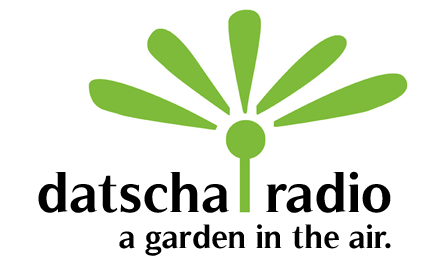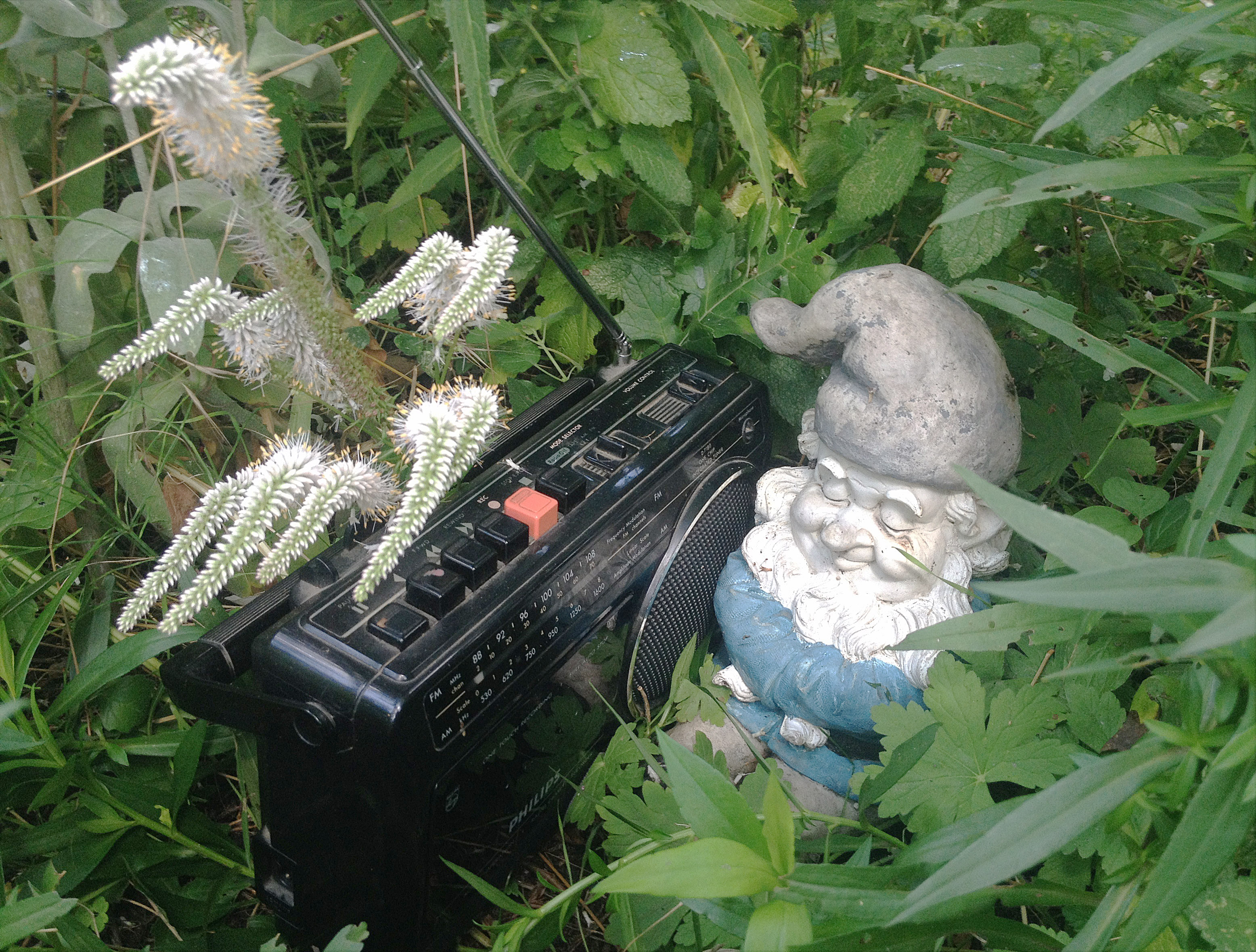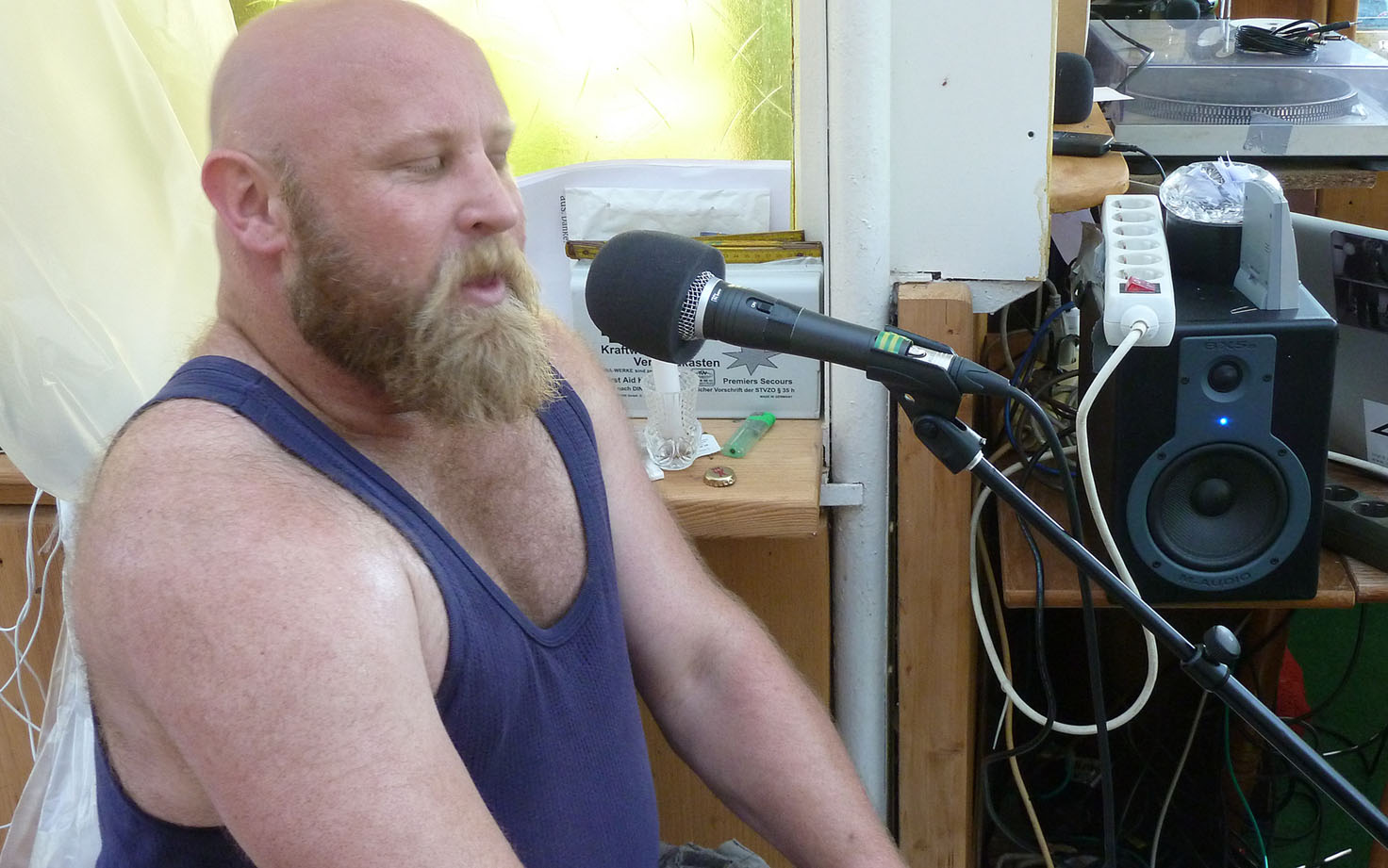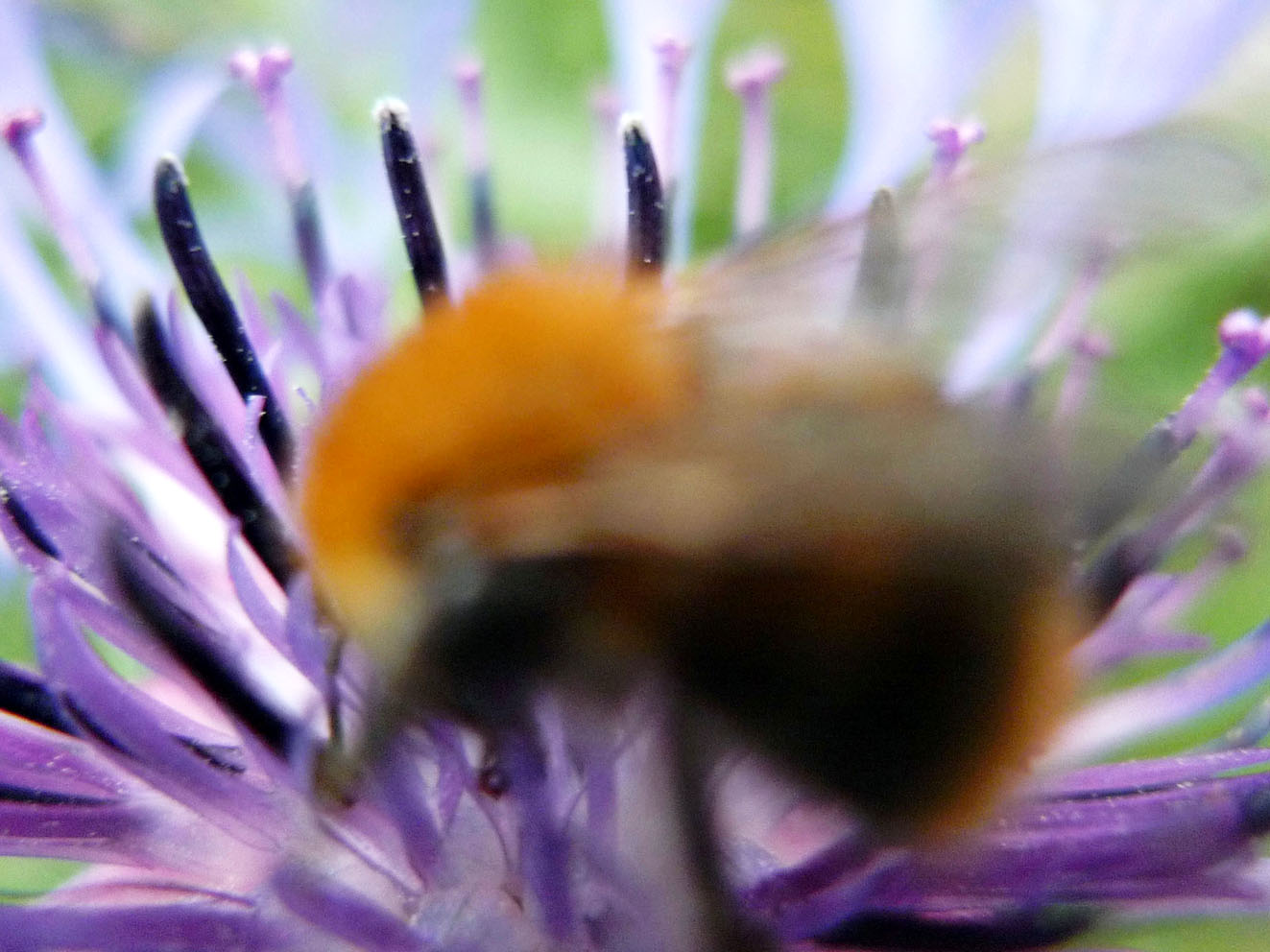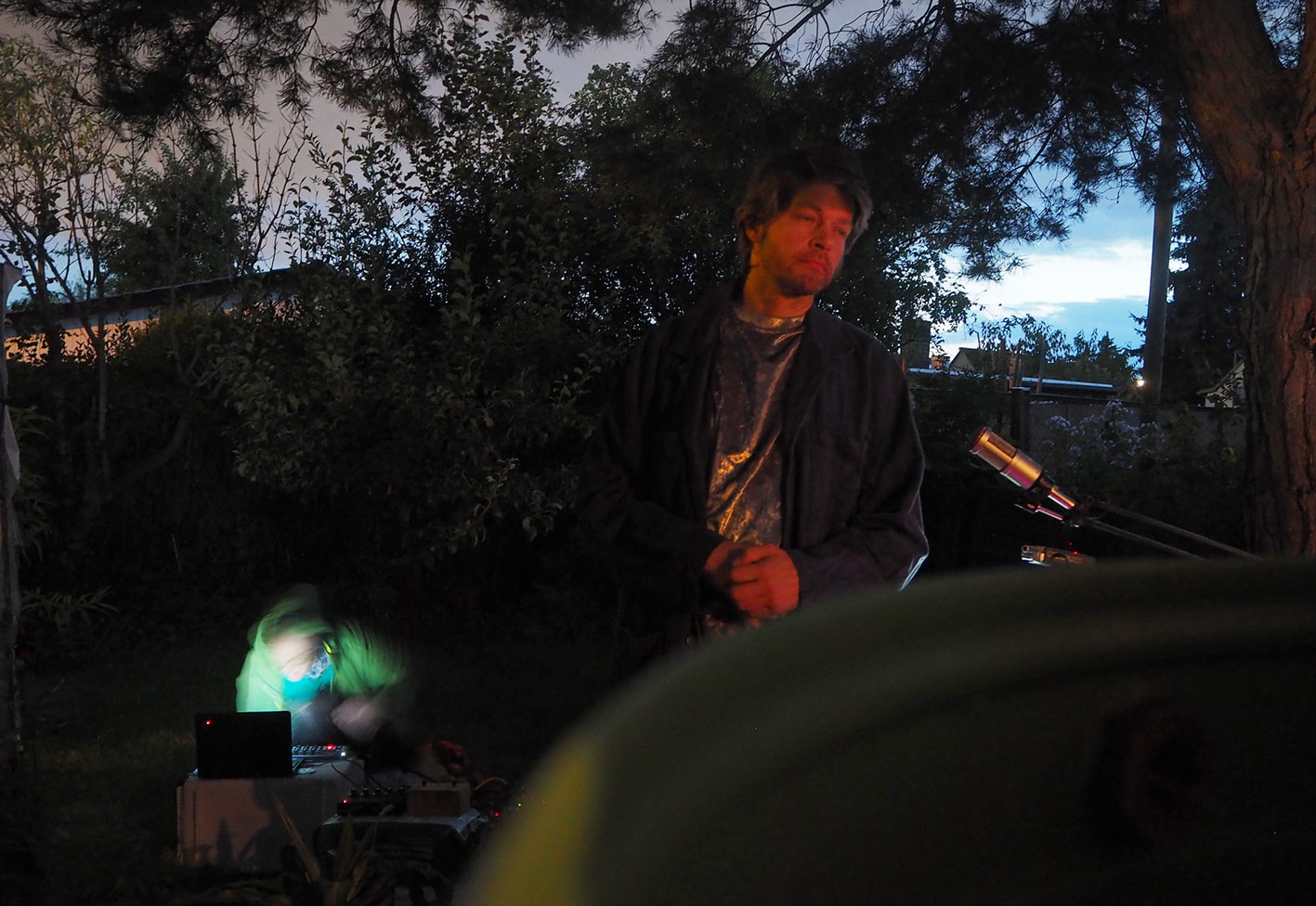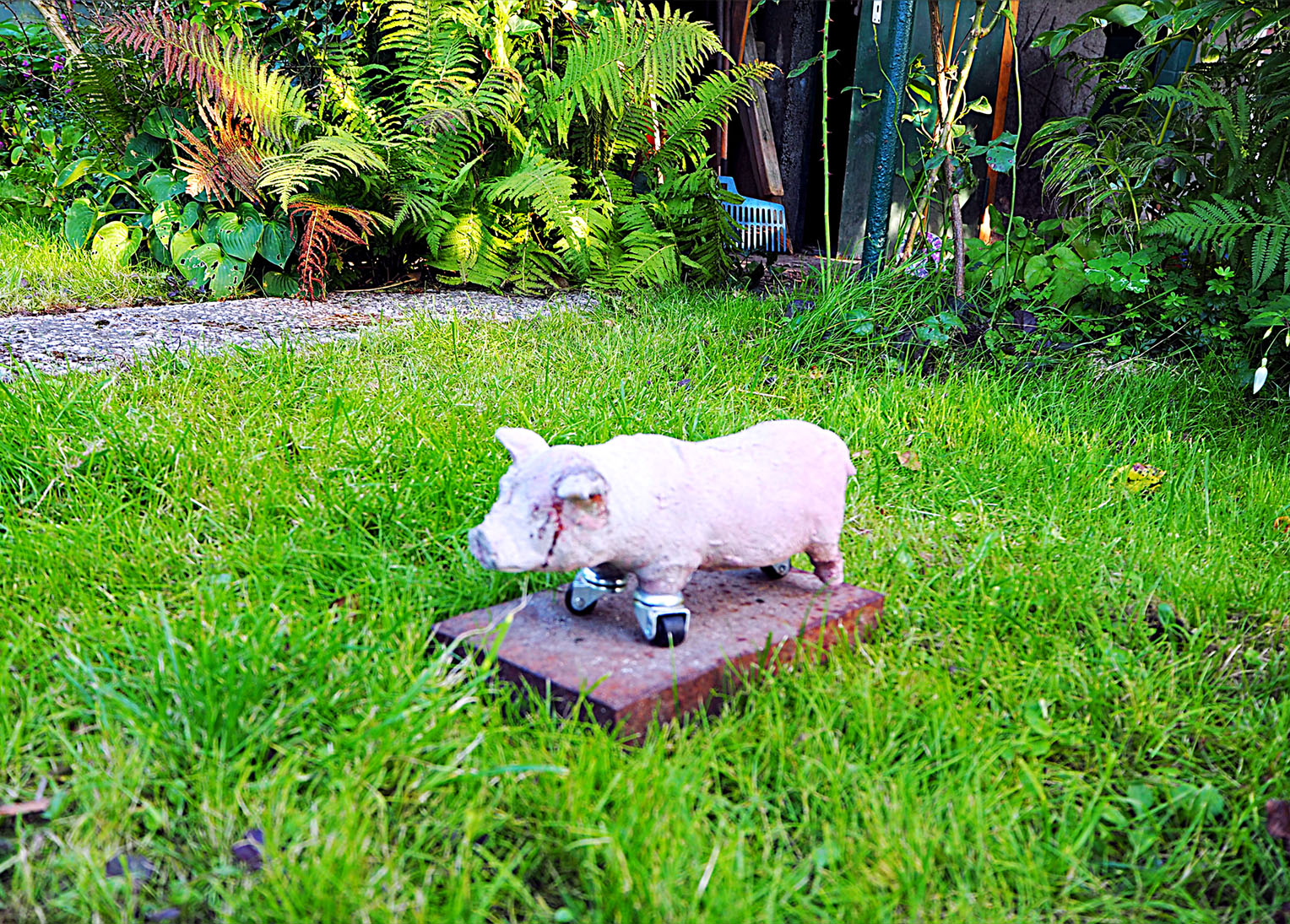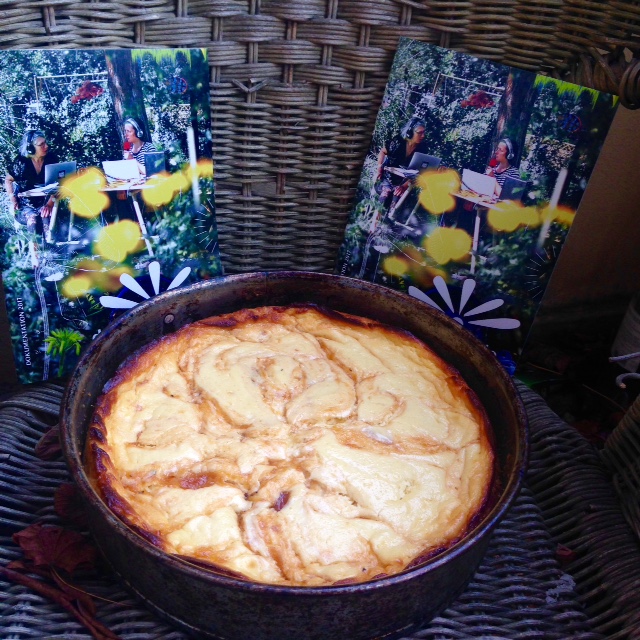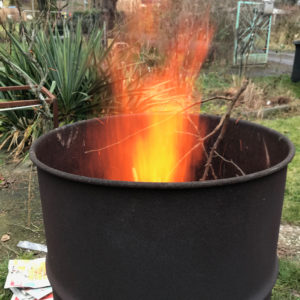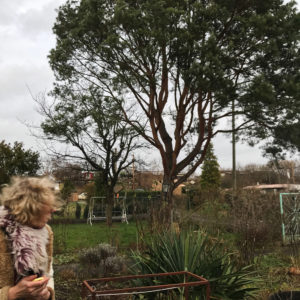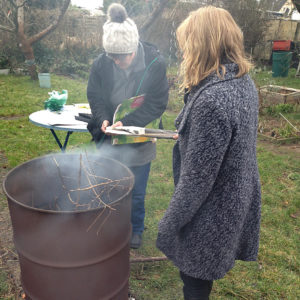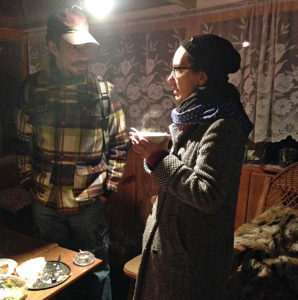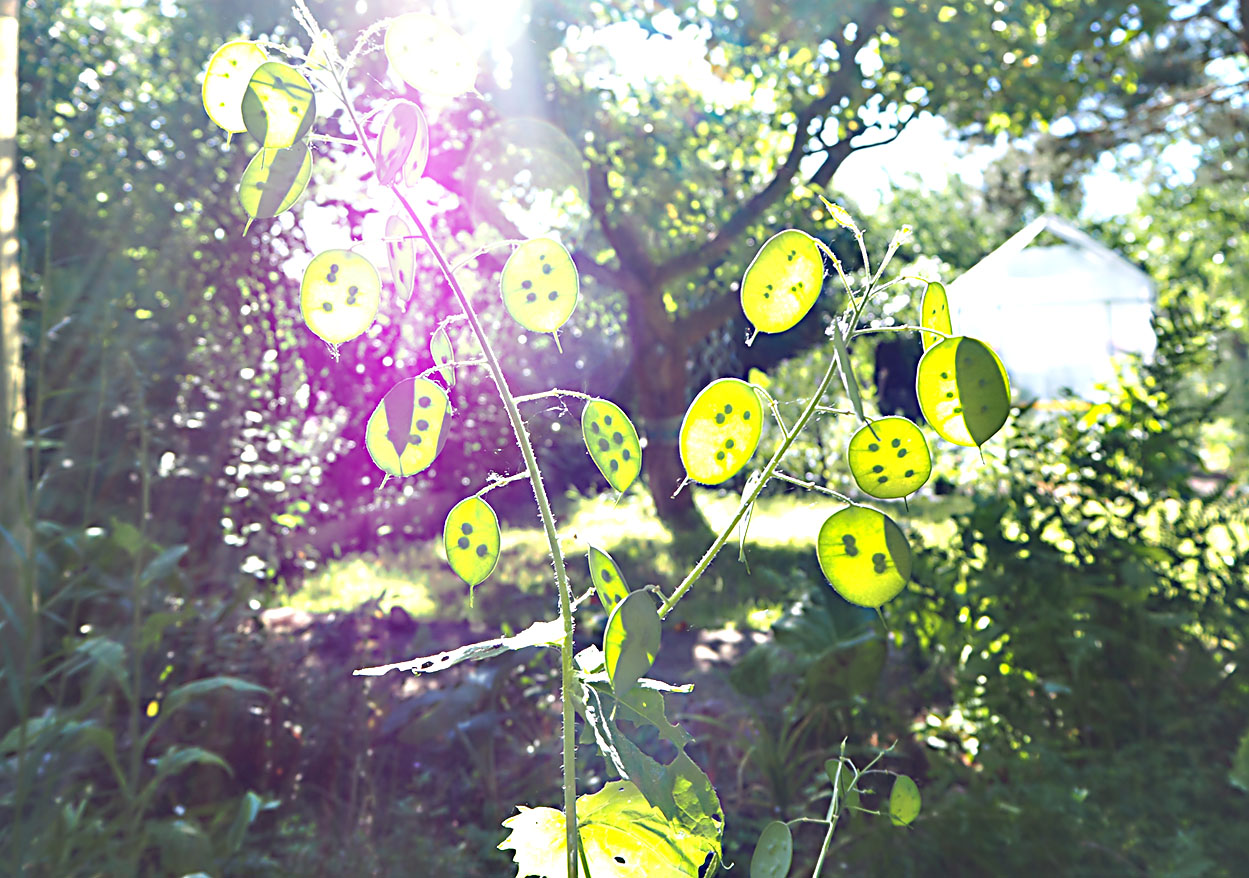Text: Kate Donovan
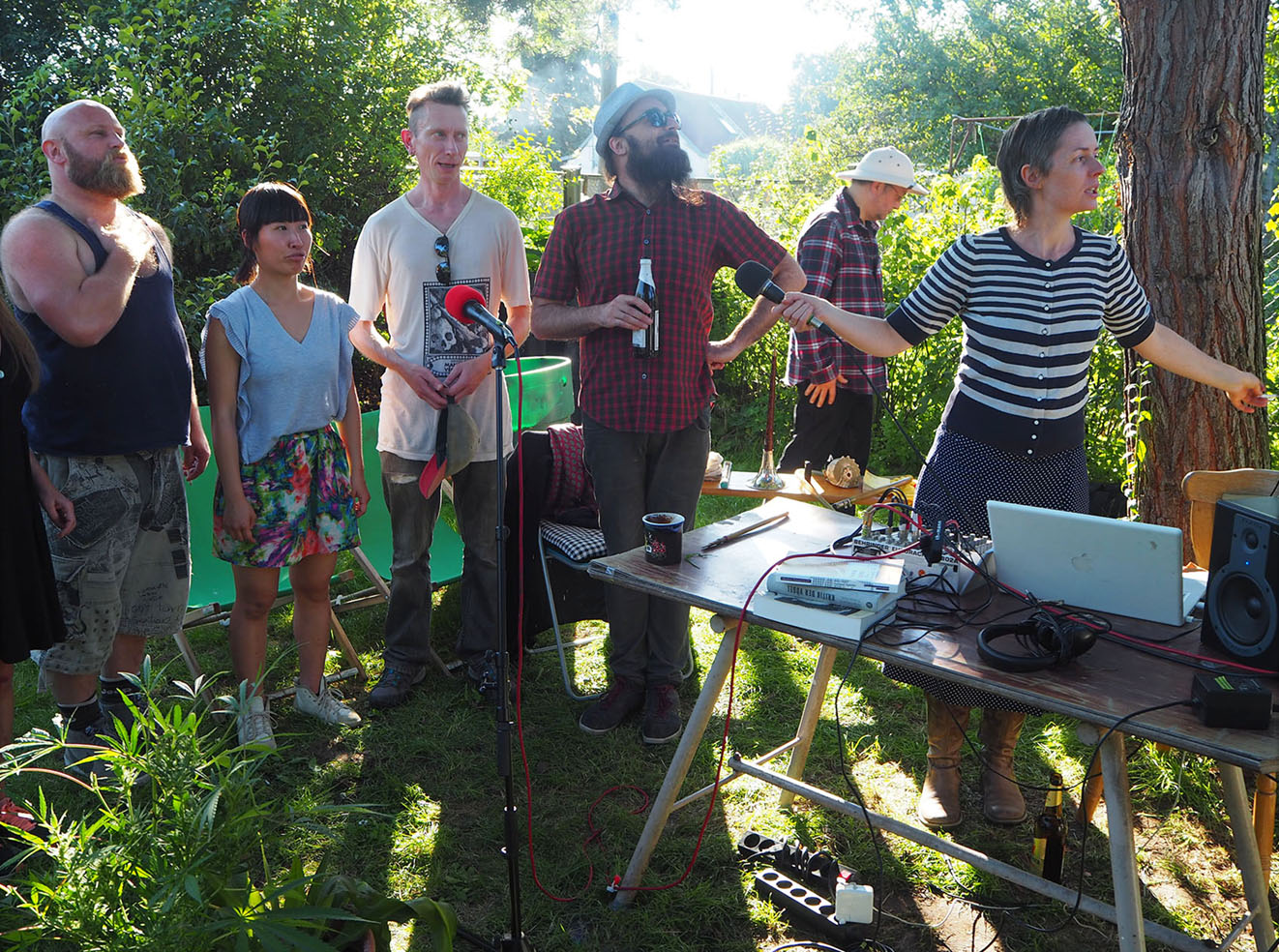
***In the beginning, there was radio. ***
Some say that there was a quickening, and that the Earth’s core bubbled and burped to release the egg, and that the soft, brittle egg cracked to release the worm – the double worm of two entwined in one – to let it slither out and go underground, to disperse through all elements and up through the aether, burrowing down and emerging up at the same time. (Though some say it was the other way around.)••• But the sun and rocks and stars know that there was radio even before that, and nuclear waste (among other things) will go on to tell our (non-human) successors of the future, that there will still be radio, even then.
The final day of the festival saw us move the studio outside into the garden, toes in the earth, voices in the air. The theme for the day, as I understood it, was threefold: slowing down, thinking about materialities, and imagining. Radio precedes and exceeds us, it lends itself to the imaginary because it stretches beyond our wildest comprehensions. Thinking in such timescales forces us to think beyond what we know, have known and could possibly know; it is a wonderful moment for what Donna Haraway terms ‘speculative fabulation’. (I made that up about the radiating DNA worm.)
What I find most compelling about the so-called Anthropocene, is the curious, yet ironic effect it has of making us humans think beyond ourselves, beyond the space and time of ourselves, to the matter in, of and around our planet. And it pushes us to think further, if we can, beyond our physicality to a materiality of immateriality. In the radio garden – a materiality of frequencies.
Paying attention in the garden, we become aware of the unseen transmission of information, between plants, between insects, between humans, between living cells, molecules, bacteria, between all or any combination of these things with each other, all the time. Sometimes we need to slow down to notice the details, to concentrate, to focus, to ruminate. To decelerate. To work against the speed and force in which human endeavours are impacting the Earth.
Some say that the experience of dying is twofold: time slows down whilst mental images cascade. Here I will provide a cascade of images from Datscha Radio17’s final day, for you to read slowly:
- a text on the interaction of elemental fluxes, the codes of the universe held within a breeze, being read over recordings from a wind tunnel;
- talking about how one lives on, how the seeds of ones essence are dispersed after death, and how they may suddenly begin to grow in unexpected places;
- listening to the details of our shared immediate surroundings, and taking our subjectivities into consideration;
- dunking our heads into the waters and finally hearing what the sirens have to say;
- singing, spontaneously, together;
- talking with plants about their root system communications and ancestral knowledge;
- carefully, carefully looking in the garden to make music with water and air;
- wondering at the immensity of burrowing insects and seismic vibrations; pushing our senses to the limit in order to smell the airwaves…
…though let’s see this not as an end, but as a step into winterly rejuvenation. This year saw a good and varied harvest in the Datscha garden, and this catalogue is just one of the many fruits. Some others – which were airborne – have already scattered through the elements as electromagnetic waves and more, dispersing and combining with other remnants, to compost, to create and share nutrients, to enrich the soil, and will emerge again when the temperature is right.
***In the end, there will still be radio***
Translation: Gabi Schaffner
Read More
